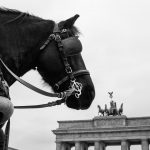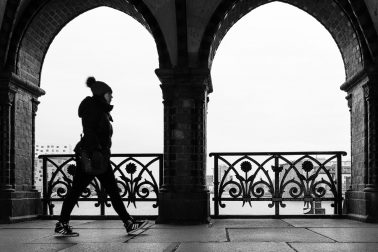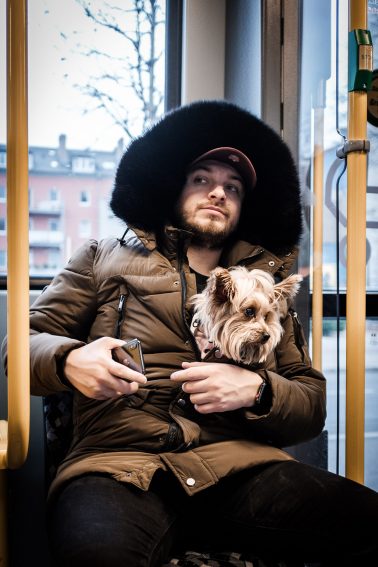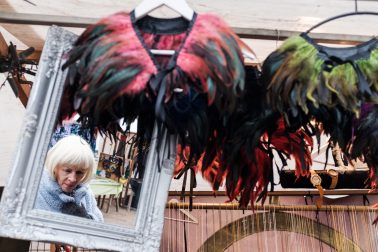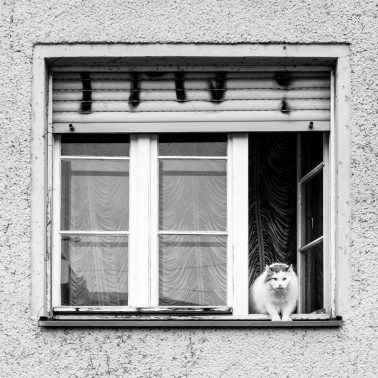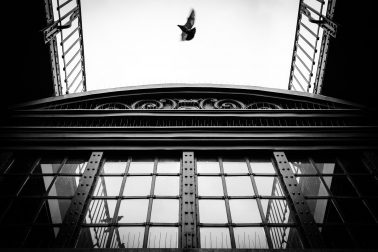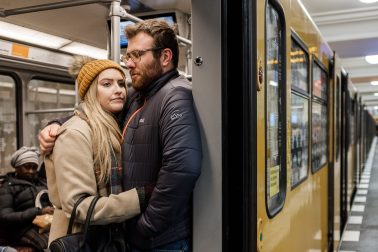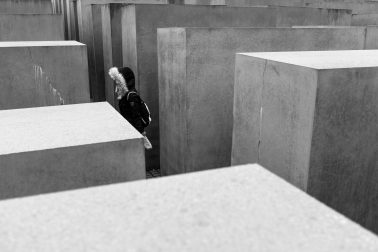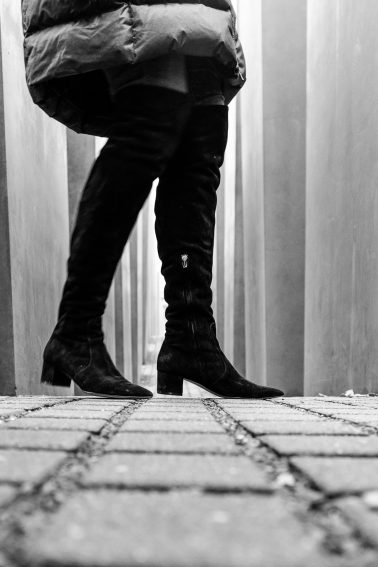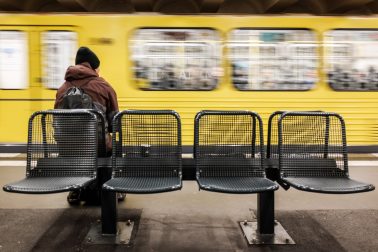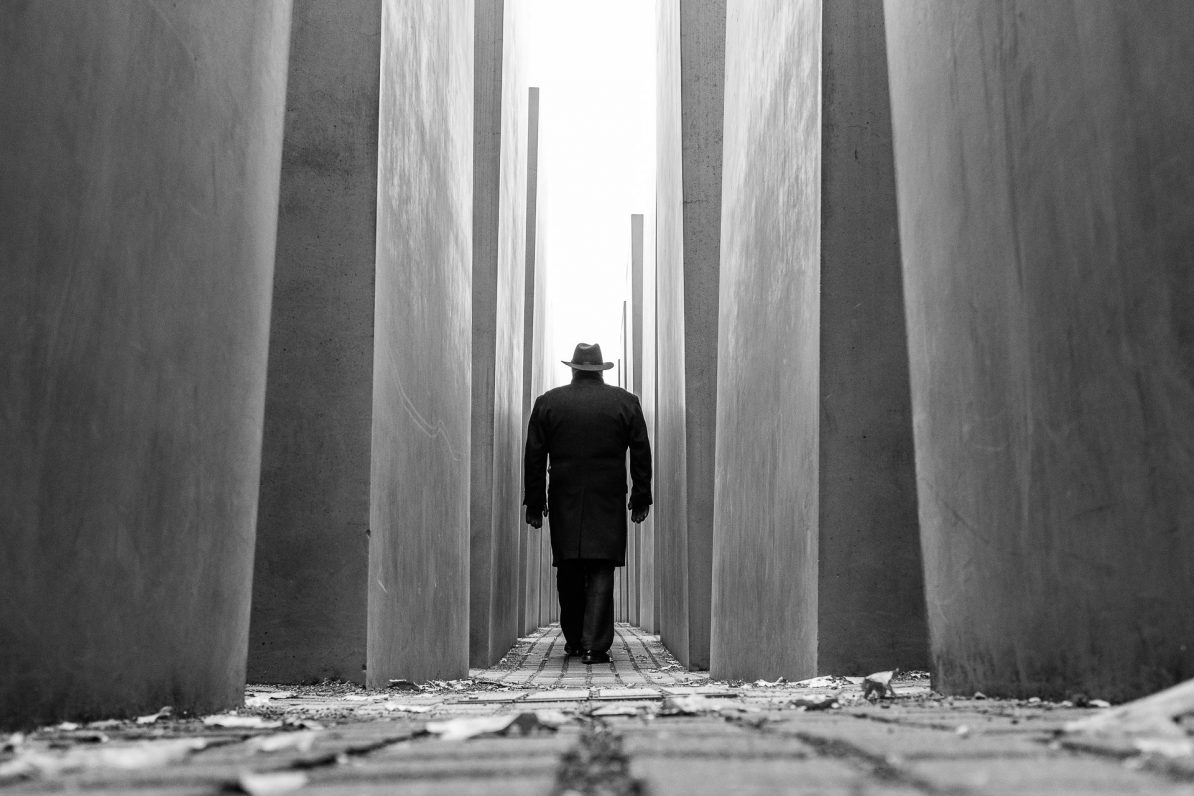
Introduction
Back in December 2018, I attended my third workshop for that year. I’ve been to Berlin several times before and I know it pretty well, but I haven’t actively shot Street there, yet. So I decided to visit Martin U Waltz and participate in one of his weekend workshops. In this article, I want to share how I perceived the workshop next to the lessons that I have learned from Martin.
Agenda
The workshop started at Martin’s place on a Friday evening. We sat together and Martin started with a portfolio review of 15 photographs we were supposed to send him prior to the workshop. On the second day, we met at Potsdamer Platz and had a long photowalk all over Berlin Mitte and the Government District. The walk included several approx. 30 minute one-on-one sessions, which was really cool. After a really cool Lunch at Ständige Vertretung, we continued the walk for a couple of hours and went back to Martin’s place, where we selected and developed our work from that day. The third day basically had the same vibe, a photowalk followed by editing. At the end, we had to send 5 of our favourite results to Martin, which he then reviewed and discussed.
Portfolio Feedback
I thought a lot about which photographs to send to Martin. “Should I send him B-Sides, so there’s more potential for improvement in there?”, “Should I send him my personal favourites and risk embarrassing myself?”. I chose the latter and took my personal best shots and here’s why: To get an honest, constructive and objective feedback on my work is important to me. It may sound stupid, but I’m “in love” with my personal favourite shots, because they provoke certain emotions in me when I look at them. They remind me of the feeling I had when I took the shot.
We all know that “being in love” takes away almost all objectivity. So my strategy was, if I can’t be objective about it, let’s get a second or third opinion from someone skilled and unbiased. It turned out to be a good strategy. I didn’t embarrass myself, but I learned a lot about my photographs, what works and what doesn’t. Martin observed some tiny details that I can even fix in post processing, which will make quite a difference and maybe add a top notch to my photos. I will share two examples with you:
Example One
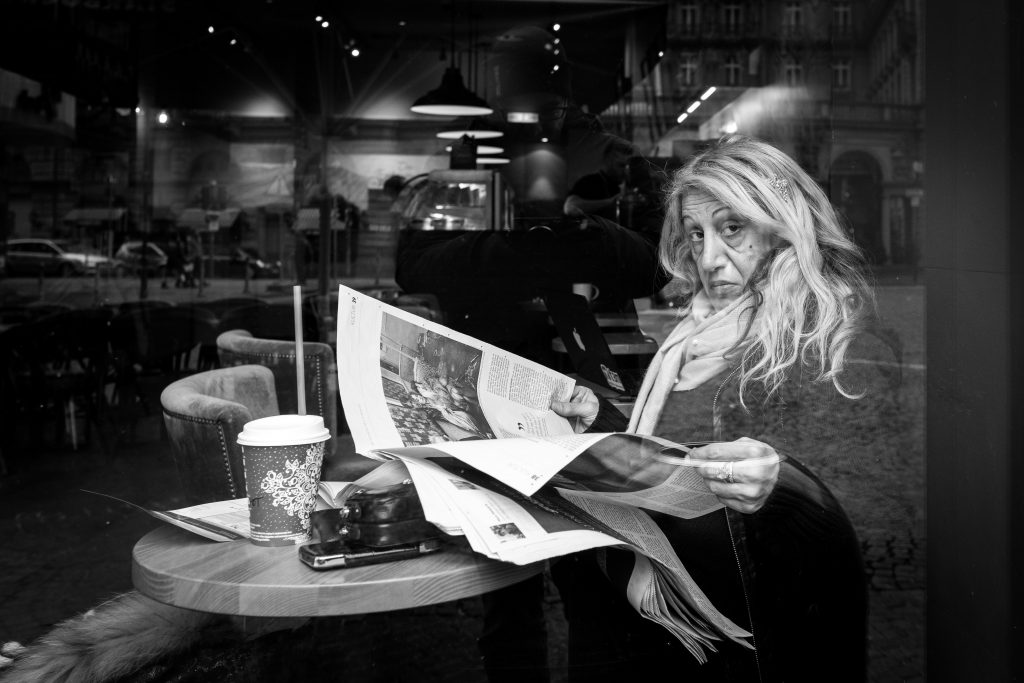
The photo of this old lady is one of my Top 10 favorites. Composition-wise, the photo is fine. However, you might notice that the newspaper she’s holding is quite bright compared to her skin tones. This is a problem, because in a photo, the spots with the highest contrast will catch our eye first (which applies to color photos as well). I already knew this before and yet I was too lazy doing something about it in post processing. I did change it recently by applying some dodge and burn like in the good ol’ darkroom days.
Example Two
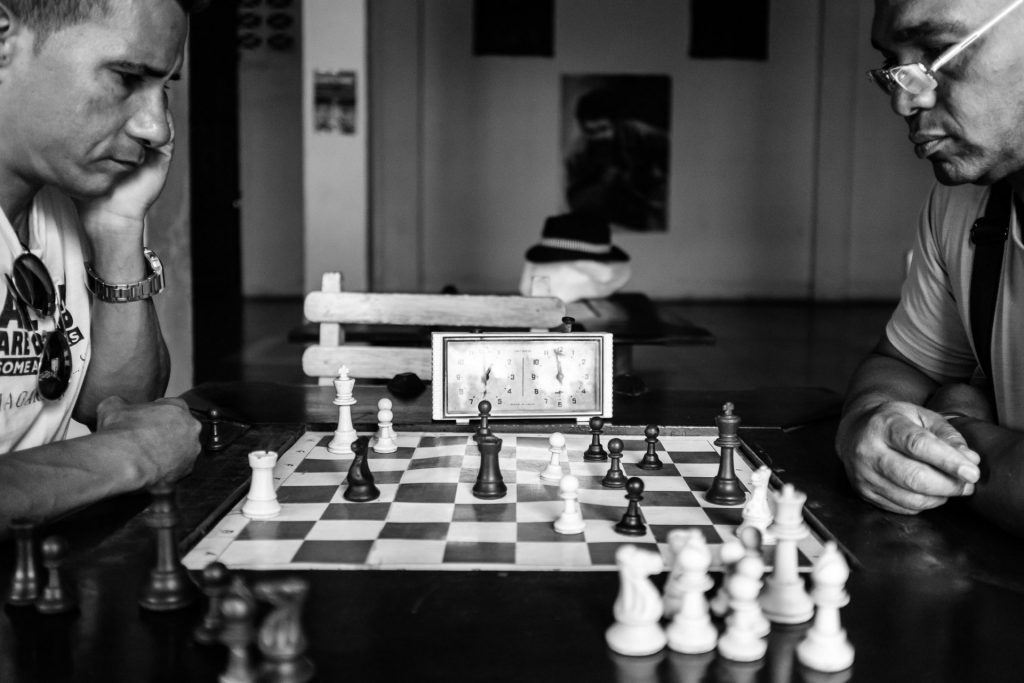
This shot was taken in Cienfuegos, Cuba in 2017 and I like it very much, because I think it expresses calmness and I love the small details. However, it was one of those times, where I actually might have been too close, because I cut off the ears of both guys. “But can’t you just apply a different crop?” I hear you asking. No, it’s an out of camera shot. A couple of years ago I already learned that you shouldn’t crop off certain parts of the body, especially at the joints. But I didn’t know anything about ears. This made me re-evaluate this whole topic and I found this interesting article/image.
The Lessons
Alright, enough about the past, let’s see the actual new things I’ve learned from Martin.
Shoot Flash – Even in Daylight
When we were at the Eastside Gallery close to Warschauer Straße, I had a one-on-one session with Martin. He suddenly pulled out his wireless flash and I thought “Yeah man, why not!?”. I didn’t have an actual wireless external flash with me, but I just used the internal flash of my Fuji X100F, which worked just fine.
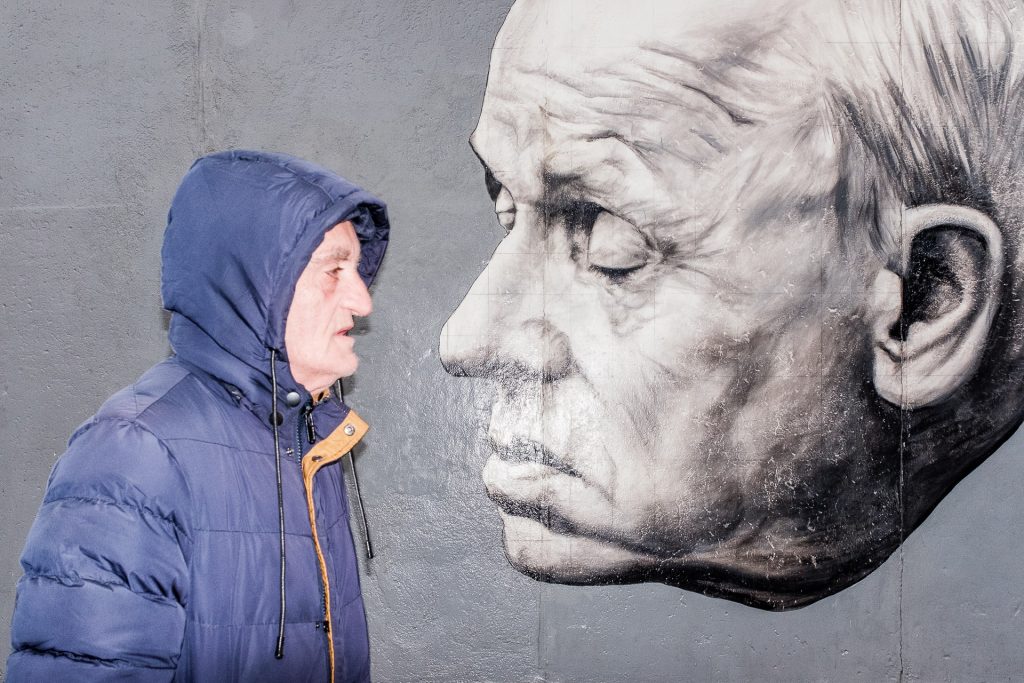
Flash even helps in daylight to really make colors pop. This was especially helpful at that particular location, because there’s lots of color in the cool graffitis on the old pieces of the Berlin Wall. It also helps exposure-wise. Let’s assume it’s daylight, but it’s rather dark and gray. The little extra of light coming from the flash will enable you to use a faster shutter speed to really freeze motion, if wanted. Here’s my flash result:
Focus on the Focus
At the Brandenburg Gate, I took this shot with the horse allegedly trying to eat the four horses of the Quadriga on top of the gate.
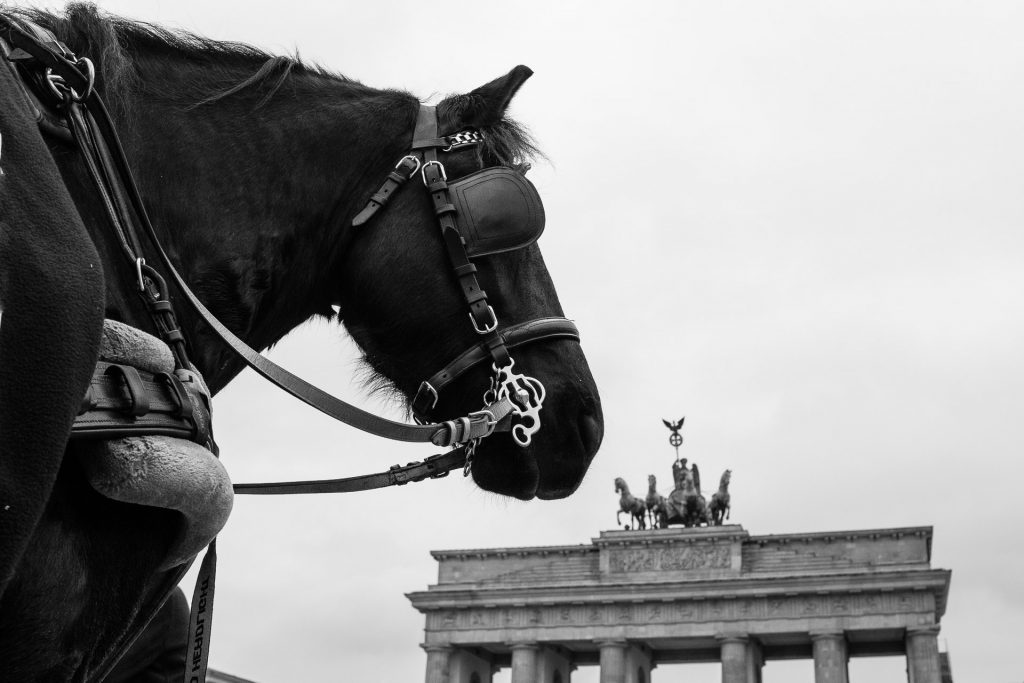
When I took this shot, I set the focus to be on the actual horse, because it was the “object” close(r) to me. However, Martin’s advice was to focus on the Quadriga in a situation like that. All the details on the actual/big horse are nice to see, but they don’t really add to the story. Given the size comparison between the two objects, it would have been “better” to have more details on the Quadriga. Or vice-versa: It would have been enough for the story to see the shape and contour of the actual horse.
Shoot more Color
Yeah, well, this one is difficult for me. I usually personally prefer black and white over color, for two reasons. First, black and white photographs are more appealing to me, I just like looking at b&w. Second, my “eye” is trained to see geometry and contrasts before colors. I know how color composition works and that colors opposed to each other on the color wheel work well together (or triads and other schemes). However, I’m having trouble isolating “interesting” colors on the streets, because most cities are basically overloaded by so many colors. But I’ll try, here’s a color shot from Berlin:

The Beauty of Touristy Spots
Let me be direct on this: I usually hate touristy places for street photography. Sure, whenever I’m in a new city like NYC, for instance, I do wanna see the Empire State Building or the Brooklyn Bridge. But I used to hate these spots for street photography, because tourists often look and behave the same with all their selfie-sticks. Plus, I’m usually drawn to documenting/photographing locals in their natural environment/habitat. I really changed that attitude in Martin’s workshop!
On the first day, we stayed at the Brandenburg Gate for something like an hour. At first, I hated that place for the homogeneity in people’s look and behavior. I wandered around and nobody seemed to stand out in terms of look and/or behavior. But then I saw that coach with two horses and people crowding up around. I thought to myself “Huh, interesting, let’s see what’s gonna happen there”. Like I always do, I didn’t position myself where all the tourists are, but directly next to one of the horses. Ruining everyone else’s shots ^^. Then I saw the story between the horse and the Quadriga. Now I only had to wait for the horse to turn its head to the right.
Vision Practice
This is about taking the shot or not taking it. We all develop and hopefully enhance our vision over time. This also means our internal “filter” for a good situation/motive/shot gets better and sharper. Whenever we observe a situation that attracts us, we have to decide whether to take a shot. Let’s assume the background is messy or some colors don’t match. If our vision is well trained, there might be a tendency to not taking a shot, because we know the result won’t be a keeper, publishable or usable otherwise. However, I learned that it could be a good idea to take the shot anyway. “Why?” I hear you asking. Well, to practice and train your vision. Here’s a good analogy. Guitarists (or any other musician) practice playing scales over and over again, even though there’s no underlying musical composition. It’s simply to practice and keep up to a certain level. I think it’s the same thing in photography. We have to practice our vision and try to keep our level.
Conclusion
First of all, the obvious: A workshop is always a good idea, because it gives you a new fresh input on your work and new perspectives on where to go next. I didn’t have any expectations on Martin’s workshop other than inspiration. But I really learned a lot from Martin and I’m glad about that. I will definitely try to shoot more color in 2019, which is gonna be challenging for me. Maybe even with flash. Maybe my color journey will be easier if I use flash, just because it’s more fun. I will also give touristy places more of a chance, wherever I might go. I will also try to take more shots, even if the situation is messy or I presume that the shot won’t be a keeper.
There you go, I hope you enjoyed these lessons and you learned something new today. Happy shooting!
Martin, If you’re reading this: You’re a cool dude! Thanks for showing me “your” Berlin, giving me new perspectives and inspiration. I really enjoyed the workshop and I can already tell that it has a sustainable impact on my way of shooting.

